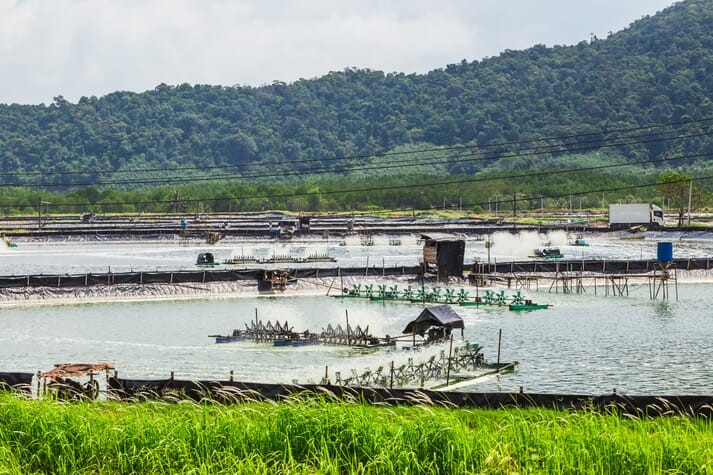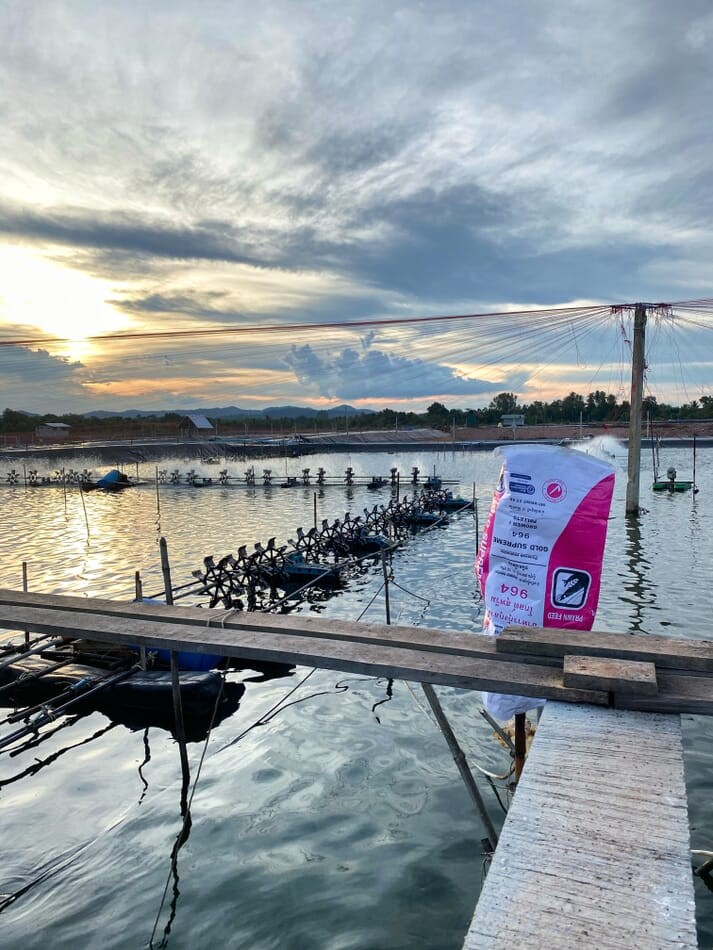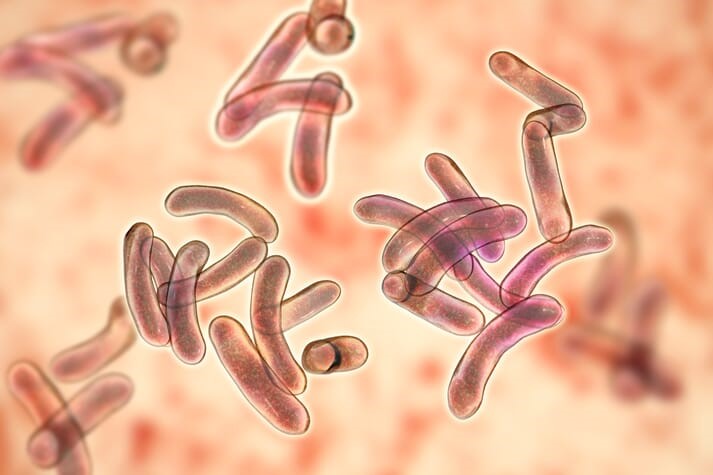Adding microalgae T pseudonana (Thalassiosira pseudonana) to culture water can improve overall water quality, suppress vibrio levels and boost growth rates for intensively farmed whiteleg shrimp.

Adding microalgae to culture water yields multiple production and shrimp health benefits
A new study published in the journal Aquaculture has identified multiple benefits of growing microalgae alongside whiteleg shrimp (Litopenaeus vannamei). Researchers found that adding the microalgae T pseudonana to culture water significantly decreases ammonia levels, suspended solids, orthophosphate, nitrite and nitrate over the farm cycle. They also noted that the microalgae helps regulate pH levels and increased dissolved oxygen levels in daylight.
The study also found that adding microalgae to the culture environment supresses the concentration of Vibrios in tank sediment and the surrounding water. This suggests that the microalgae can help keep shrimp healthier by keeping pathogens at bay. When compared to a control group, the researchers note that shrimp grown alongside the microalgae have a significantly higher average weight gain and growth rate, while achieving the lowest feed conversion ratio. The results suggest that adding T pseudonana to intensive culture systems will improve water quality and prevent the accumulation of Vibrios in the water, which could lead to better growth performance for the shrimp.
The potential benefits of greenwater aquaculture
Shrimp aquaculture has expanding rapidly, but it continues to face challenges from environmental pollution and viral diseases. Experts like Pacheco-Vega and Lu have suggested that shrimp farmers use microbial and microalgae in culture water to improve water quality and reduce pathogen levels instead of relying on chemical agents. Microalgae naturally remove nitrogen and phosphorous from culture water and can also produce extracellular compounds (like tropodithietic acid) that inhibit the growth of Vibrios other harmful pathogens.

Studies suggest that fish farmers can use microalgae to suppress pathogens
Using microalgae or “greenwater” technology in aquaculture systems yields other benefits as well. In addition to removing nutrients in culture water, microalgae species can treat aquaculture wastewater and mitigate pollution in adjacent areas. Since they contain lipids, minerals and essential amino acids, they can also serve as feed source for cultured fish and crustaceans. Other studies have shown that adding microalgae to culture water has improved shrimp’s growth survivability and weight gain when compared to a control.
The current study and results
For this study, the researchers used specific-pathogen-free post-larval whiteleg shrimp and split them into three experimental groups. The control group were introduced to three concrete tanks (6m long x 5m wide x 1.6m deep) at a stocking density of 250 shrimp/m3. They were raised in seawater for the 84-day trial period. The other two experimental groups were raised six separate tanks with the same dimensions and stocking densities, but instead of solely using seawater, the researchers introduced the shrimp to different microalgae species during the trial period.
One experimental group was raised with the microalgae Nannochloropsis oculata (N oculata) at a stocking density of 10 × 104~80 × 104 cells/mL. The other was raised with Thalassiosira pseudonana (T pseudonana) at the same stocking density. The researchers used uniform-sized shrimp for the trial so they could compare their growth and weight gain.
Shrimp in the T pseudonana group showed significantly better results across the study indicators than those in the control group or shrimp raised with N oculata microalgae.
The trial showed that shrimp raised in the experimental cohorts had improved growth and survivability when compared with the control group. The cohorts raised with microalgae also showed better water quality parameters than those raised in seawater alone. However, shrimp in the T pseudonana group showed significantly better results across the study indicators than those in the control group or shrimp raised with N oculata microalgae.
Farming shrimp alongside T pseudonana kept nitrite, nitrate, orthophosopate, total ammonia nitrate and suspended solid levels low. It also helped regulate pH levels and increased dissolved oxygen levels in the culture water during daylight. The researchers also noted that vibrio levels in culture water and sediment were significantly lower in this group, suggesting that the microalgae could suppress the growth of opportunistic pathogens.

Shrimp grown with T pseudonana had lower vibrio counts in the water and culture sediment
Shrimp in the T pseudonana group also showed the highest average weight gain (1.49 ± 0.056 g/week), growth rate (1.50 ± 0.067 g/week) and the lowest feed conversion rate (1.42 ± 0.023). The researchers found that the overall productivity rate of shrimp in the T pseudonana group was 25 percent higher than shrimp in the control group.
Because of these results, the researchers felt that adding T pseudonana to culture water was more suitable than using N oculata. They suggested doing further research on the microalgae’s inclusion rate in culture water and how sunlight impacts the algae’s photosynthetic properties.
By The Fish Site
“Domesticated Shrimp Postlarvae – The Key To Success”
See more:
- Age Has The Biggest Impact On Gut Microbiota Diversity In Black Tiger Prawns, Not Protein Sources
- How Plankton Management Can Help Reduce Vibrios
- Breeding Programme Boosts Insect Growth By 20 Percent

 Tiếng Việt
Tiếng Việt 中文 (中国)
中文 (中国)